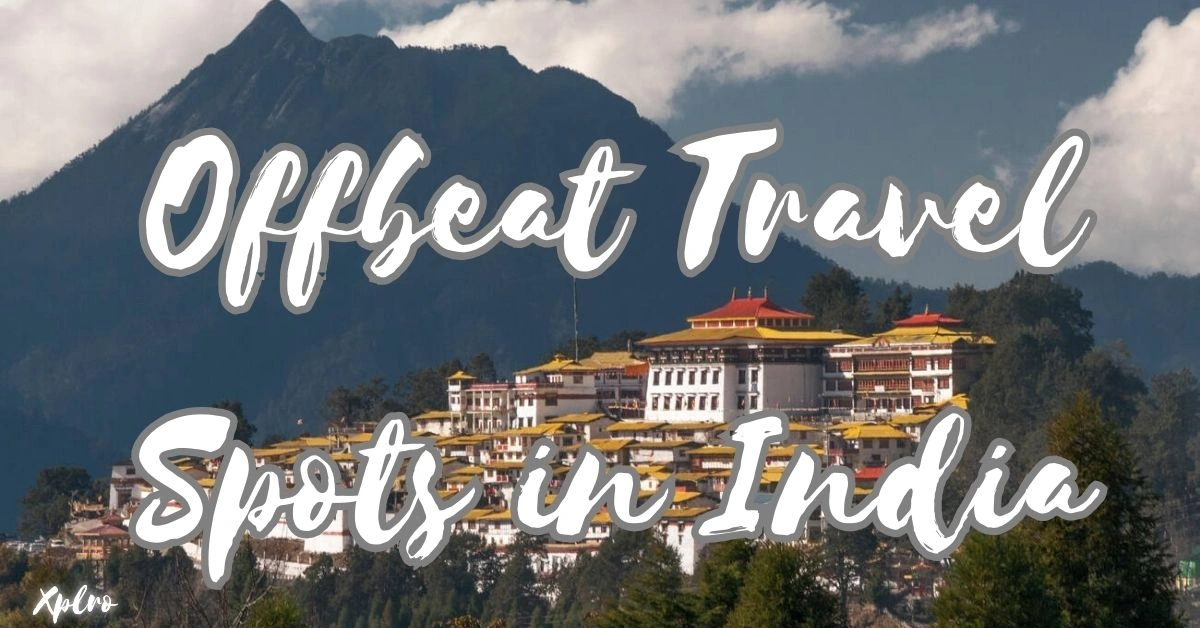Offbeat Travel Spots in India; India, a land of vibrant culture and rich history, offers countless hidden gems beyond the conventional tourist circuits. Discover the serene beauty of Spiti Valley, the ancient ruins of Hampi, the spiritual allure of Rishikesh, or the lush landscapes of Cherrapunji. Explore the secluded beaches of Lakshadweep, the coffee plantations of Coorg, or the colonial charm of Shillong. Immerse yourself in the history and culture of Jodhpur and Udaipur, or experience the spiritual significance of Varanasi. These off-the-beaten-path destinations promise tranquility, adventure, and a deep connection with India’s diverse heritage.
1. Ziro Valley, Arunachal Pradesh
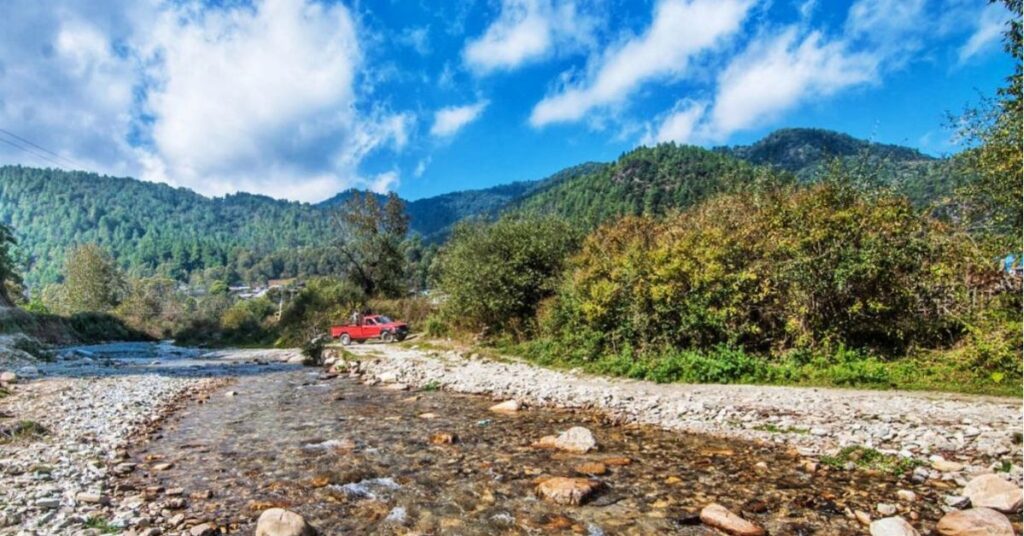
Ziro Valley is a hidden gem in Arunachal Pradesh, known for its stunning beauty and rich culture. With rolling hills, lush rice fields, and the friendly Apatani tribe, it’s a perfect place to escape the hustle and bustle.
What to Do:
- Meet the locals: Learn about the Apatani people’s sustainable way of life.
- Enjoy the music: Catch the Ziro Music Festival in September for a unique experience.
- Explore nature: Hike through beautiful trails and see forests, bamboo groves, and terraced farms.
- Spot wildlife: Visit Talley Valley Wildlife Sanctuary to see different plants and animals.
Best Time to Visit: March to October is the best time for a trip to Ziro Valley.
2. Spiti Valley, Himachal Pradesh
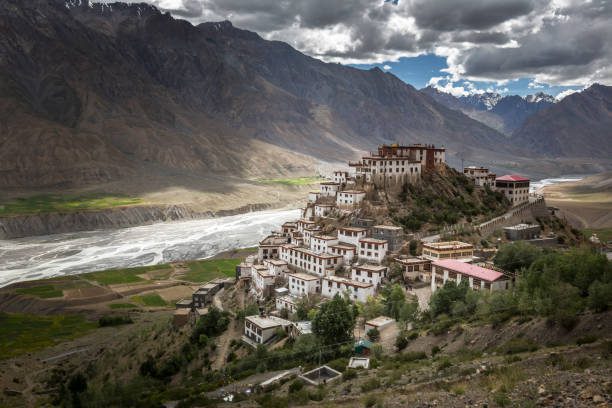
Spiti Valley is a hidden gem in the Himalayas, offering a unique and unforgettable experience. With its rugged beauty, ancient monasteries, and vibrant Tibetan culture, it’s a perfect destination for adventurers and those seeking peace and tranquility.
What to Do:
- Explore ancient monasteries: Visit Key Monastery and Tabo Monastery, some of the oldest in the world.
- See the Moon Lake: Marvel at the beauty of Chandratal Lake, known as the “Moon Lake.”
- Drive through the mountains: Experience the thrill of driving through Kunzum Pass and Rohtang Pass.
- Stay in a village: Immerse yourself in local culture by staying in a homestay in Kibber or Langza.
Best Time to Visit: May to October is the best time to visit Spiti Valley, as winters can be very cold and snowy.
3. Majuli, Assam
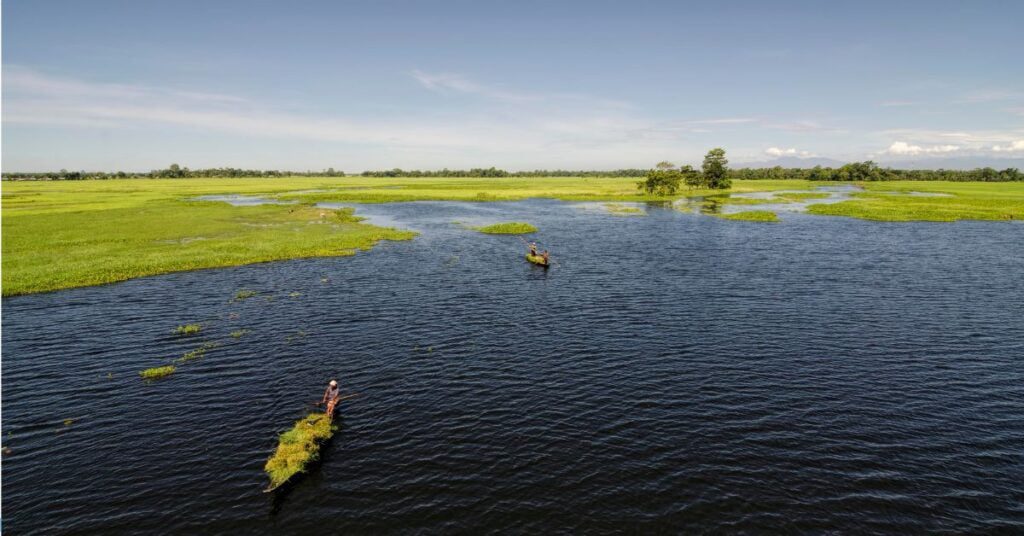
Majuli, the world’s largest river island, is a hidden gem in Assam. With its rich culture, serene landscapes, and commitment to eco-tourism, it offers a unique and unforgettable experience.
What to Do:
- Explore Satras: Visit the cultural monasteries to experience music, dance, and religious teachings.
- Learn about the Mishing tribe: Discover the unique lifestyle and stilt houses of the local Mishing people.
- Spot birds: Enjoy bird watching in this island paradise, home to many migratory species.
- Take a boat ride: Cruise down the Brahmaputra River and soak in the tranquility of the scenery.
Best Time to Visit: October to March is the best time to visit Majuli, as the weather is pleasant and comfortable.
4. Tawang, Arunachal Pradesh
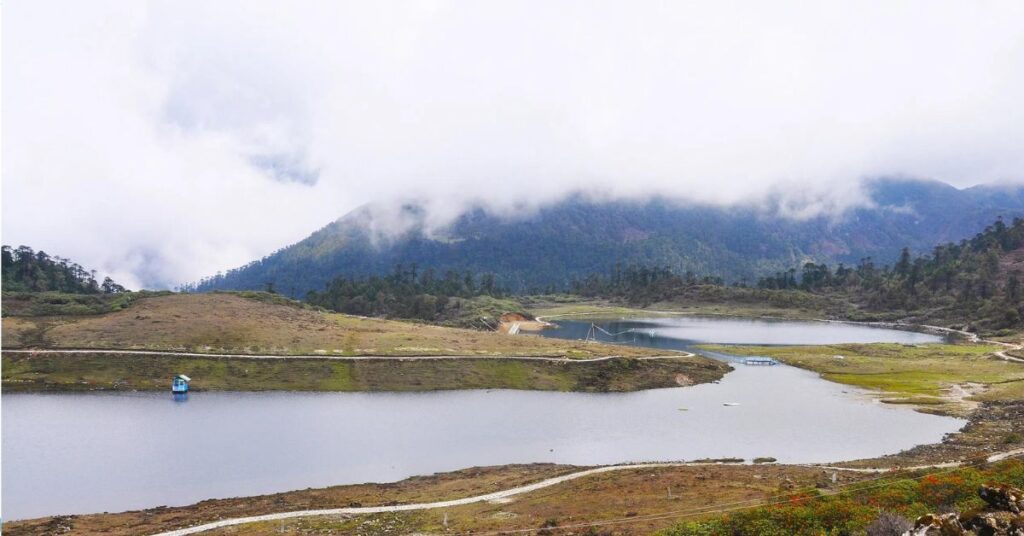
Tawang, a beautiful town near the Indo-China border, is a must-visit destination in northeastern India. With its snow-capped mountains, ancient monastery, and peaceful atmosphere, it offers a unique and unforgettable experience.
What to Do:
- Explore the Tawang Monastery: Visit this 400-year-old Buddhist monastery and admire its stunning architecture and peaceful surroundings.
- See the Sela Pass and Lake: Discover the breathtaking beauty of the Sela Pass and Sela Lake, which are covered in snow for most of the year.
- Attend the Torgya Festival: Experience the vibrant Torgya Festival, a cultural celebration with dance and music.
- Visit Shonga-tser Lake: Discover the picturesque beauty of Shonga-tser Lake, formed by a 1950 earthquake.
Best Time to Visit: March to October is the best time to visit Tawang, as the weather is pleasant and the roads are accessible.
5. Chopta, Uttarakhand
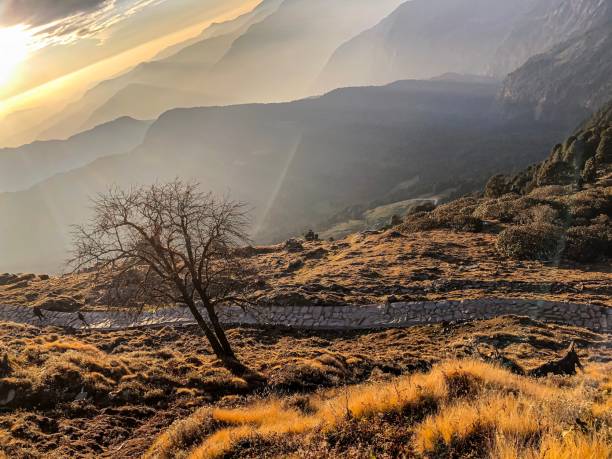
Chopta, a hidden gem in Uttarakhand, is often called the “Mini Switzerland of India.” Surrounded by lush forests, meadows, and snow-capped mountains, it’s a perfect destination for nature lovers and adventure seekers.
What to Do:
- Trek to Tungnath and Chandrashila: Enjoy breathtaking views of the Himalayas by trekking to Tungnath Temple and Chandrashila Peak.
- Explore the meadows: Discover the beauty of Chopta’s lush alpine meadows, known as Bugyals.
- Spot wildlife: Visit Kedarnath Wildlife Sanctuary to see rare Himalayan birds and animals.
- Camp under the stars: Experience the tranquility of Chopta by camping in the wilderness.
Best Time to Visit: April to November is the best time to visit Chopta, as the weather is pleasant and the trails are accessible.
6. Mandu, Madhya Pradesh
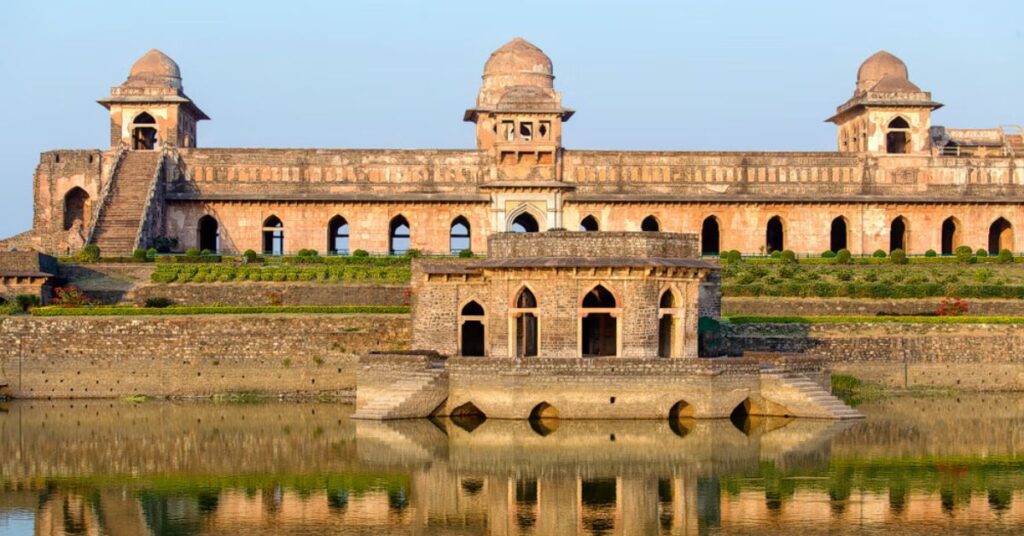
Mandu, a historical town in Madhya Pradesh, is a hidden gem that offers a glimpse into India’s rich past. With its stunning architecture, serene setting, and cultural heritage, it’s a perfect destination for history buffs and architecture enthusiasts.
What to Do:
- Visit Jahaz Mahal: Marvel at the iconic Jahaz Mahal, which resembles a ship floating on water.
- Explore beautiful monuments: Discover the architectural wonders of Hindola Mahal and Hoshang Shah’s Tomb, an inspiration for the Taj Mahal.
- Enjoy scenic views: Take a walk through Rani Roopmati Pavilion and enjoy panoramic views of the river and surrounding landscape.
- Experience monsoon magic: Witness the beauty of Mandu during the monsoon season, when the town is draped in lush greenery.
Best Time to Visit: October to March is the best time to visit Mandu, as the weather is pleasant and comfortable.
7. Gokarna, Karnataka
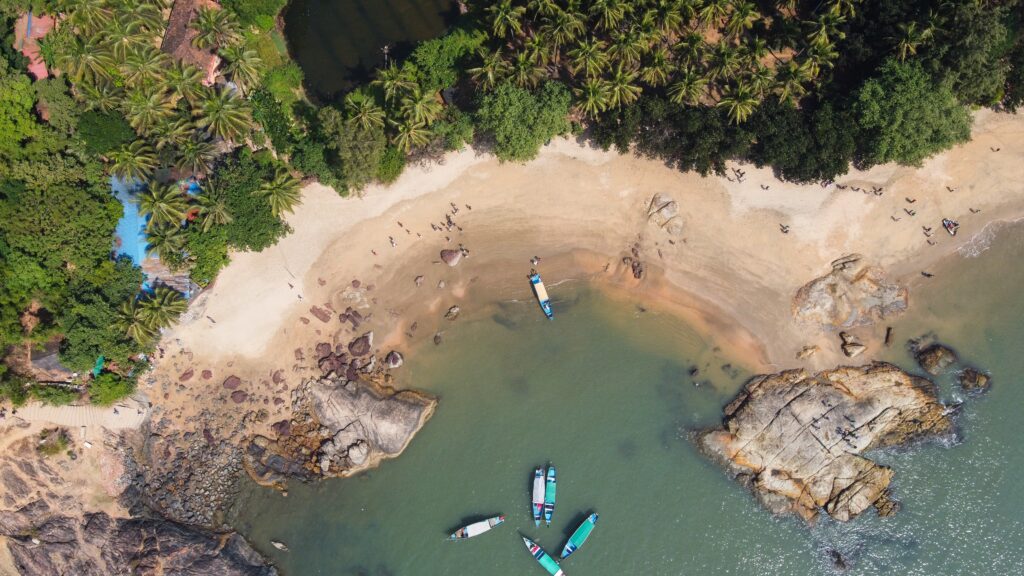
Gokarna, a hidden gem on India’s western coast, offers a peaceful and relaxing alternative to the bustling beaches of Goa. With its ancient temples, beautiful beaches, and laid-back atmosphere, it’s a perfect destination for those seeking a quiet escape.
What to Do:
- Relax on pristine beaches: Enjoy the tranquility of Om Beach, Kudle Beach, and Half Moon Beach.
- Visit the Mahabaleshwar Temple: Explore the sacred Mahabaleshwar Temple, dedicated to Lord Shiva.
- Spot dolphins: Take a boat ride to spot dolphins and explore the rocky coastline.
- Experience a laid-back vibe: Enjoy yoga retreats, beachside cafes, and a peaceful atmosphere.
Best Time to Visit: October to March is the best time to visit Gokarna, as the weather is pleasant and comfortable.
8. Khajjiar, Himachal Pradesh
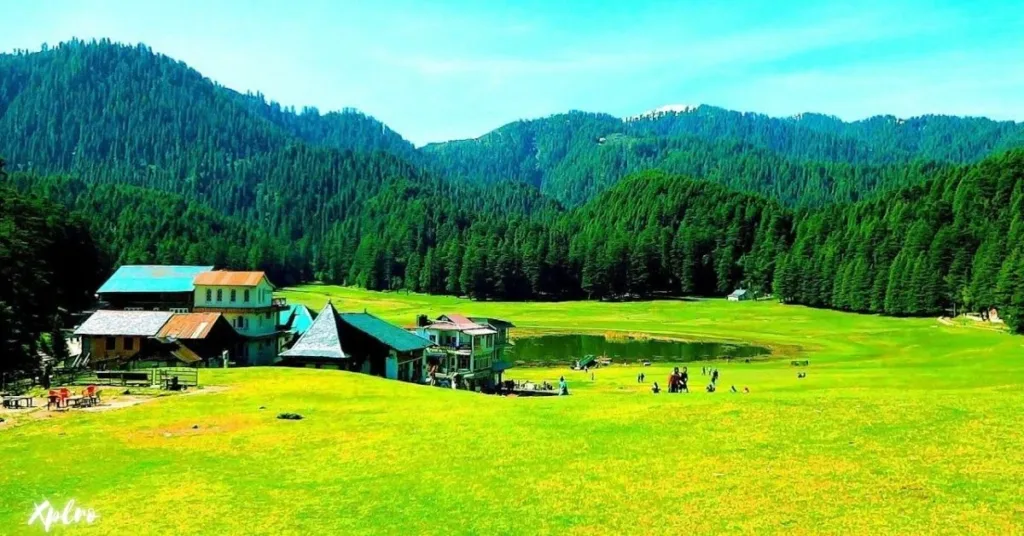
Khajjiar, often called the “Mini Switzerland of India,” is a hidden gem in Himachal Pradesh. With its beautiful lake, lush meadows, and deodar forests, it’s a perfect destination for those seeking peace and nature.
What to Do:
- Relax by the lake: Enjoy the serene beauty of Khajjiar Lake, surrounded by dense forests.
- Try adventure sports: Experience the thrill of paragliding, zorbing, or horse riding.
- Visit the Khajji Nag Temple: Explore the ancient Khajji Nag Temple, dedicated to the serpent god.
- Enjoy panoramic views: Take in the breathtaking views of the Dhauladhar mountain range.
Best Time to Visit: March to June and September to December are the best times to visit Khajjiar, as the weather is pleasant and comfortable.
9. Mawlynnong, Meghalaya
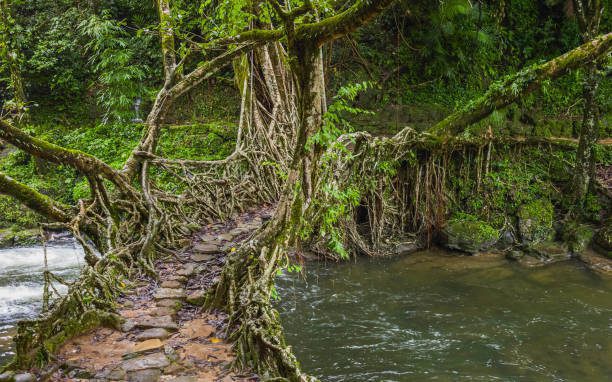
Mawlynnong, a picturesque village in Meghalaya, is renowned as the “Cleanest Village in Asia.” With its lush greenery, living root bridges, and commitment to eco-tourism, it’s a perfect destination for nature lovers.
What to Do:
- Walk across Living Root Bridges: Experience the wonder of these natural structures, formed by intertwining tree roots.
- Enjoy panoramic views: Climb the Sky Walk, a bamboo structure offering breathtaking views of the surrounding landscape.
- Explore the Dawki River: Discover the crystal-clear waters of the Dawki River and enjoy a peaceful boat ride.
- Immerse yourself in nature: Experience the clean and eco-friendly environment of Mawlynnong.
Best Time to Visit: October to April is the best time to visit Mawlynnong, as the weather is pleasant and comfortable.
10. Dzukou Valley, Nagaland/Manipur
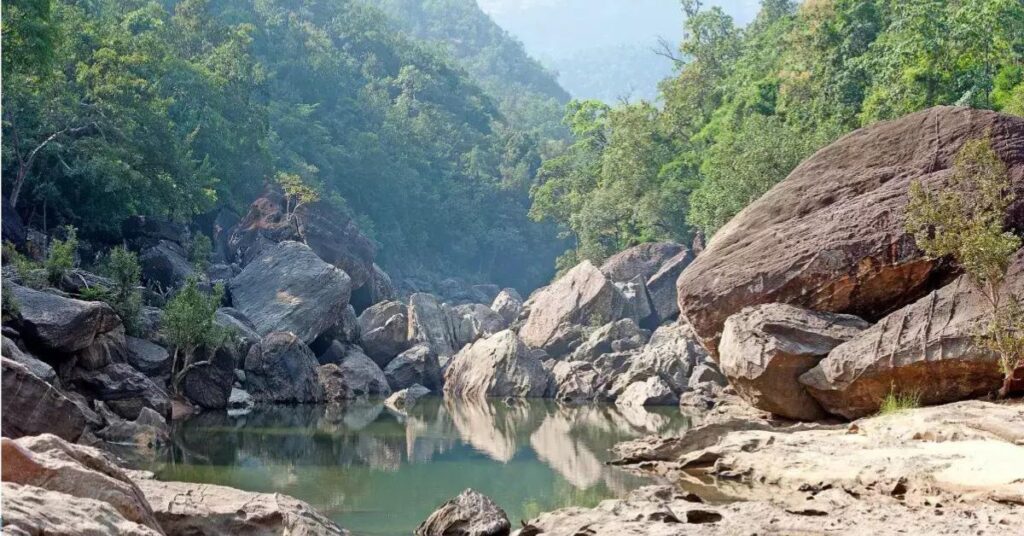
Dzukou Valley, a hidden gem straddling the border between Nagaland and Manipur, is a paradise for nature lovers. Known for its rolling hills, exotic flora, and vibrant wildflowers, it’s a must-visit destination in Northeast India.
What to Do:
- Trek through the valley: Explore the lush landscape and take in the breathtaking views.
- Camp under the stars: Experience the tranquility of Dzukou Valley by camping overnight.
- Climb Japfu Peak: Enjoy panoramic views of the surrounding region by climbing Japfu Peak.
- Witness vibrant flora: Admire the beauty of the Dzukou lily and other wildflowers that bloom during the monsoon.
Best Time to Visit: June to September is the best time to visit for the blooming flowers, while November to March is ideal for trekking.
Conclusion – Offbeat Travel Spots in India
Beyond the bustling cities and iconic monuments, India unfolds a treasure trove of hidden gems waiting to be explored on Xplro.com. Immerse yourself in the serene beauty of Ziro Valley, encounter the ancient monasteries of Spiti, or discover the vibrant culture of Majuli, the world’s largest river island. Trek through untouched landscapes in Dzukou Valley, marvel at the architectural wonders of Mandu, or unwind on the pristine beaches of Gokarna. Each destination promises a unique blend of nature, culture, and adventure, ensuring an unforgettable journey for trekkers, culture enthusiasts, and anyone seeking peace and tranquility. Explore the offbeat side of India and discover the magic that awaits on Xplro.com.
FAQs
1. What makes these destinations “offbeat” in India?
- Offbeat destinations in India stand apart due to their relative isolation from mainstream tourism, offering visitors a unique and less commercialized experience. Unlike famous tourist spots, these places are less crowded and provide travelers the chance to explore more authentic and serene settings. These destinations showcase hidden natural beauty, indigenous cultures, and a peaceful environment, allowing travelers to enjoy a slower, more immersive experience. Ziro Valley in Arunachal Pradesh and Majuli in Assam are excellent examples of offbeat destinations that combine rich culture with natural beauty.
2. Is it safe to travel to offbeat locations in India?
- Yes, traveling to offbeat locations in India is generally safe, though, as with any travel experience, it’s important to take precautions. Many of these remote places are known for their welcoming local communities and peaceful environments. It’s always wise to research a destination thoroughly, check for recent travel advisories, and make sure you are prepared for the particular conditions in rural or mountainous regions. In places like Spiti Valley or Tawang, where infrastructure may be limited, it’s essential to have a clear understanding of the terrain and climate, as well as the best travel routes.
3. What are the best months to visit offbeat destinations in India?
- The best time to visit these remote spots depends largely on their geography. For hill stations like Spiti Valley or Chopta, the months from April to October offer the best weather, while the winter season brings snow and can make these destinations difficult to access. On the other hand, northeastern destinations such as Ziro Valley or Mawlynnong are ideal from October to March, with moderate weather conditions and pleasant temperatures. For beach lovers visiting Gokarna, the cooler months from November to February provide the perfect climate for relaxation and exploration.
4. Are accommodations available in these remote places?
- While offbeat destinations may not have the extensive range of accommodations found in major tourist hubs, there are still a variety of options available to suit different travel preferences. In regions like Spiti Valley and Tawang, traditional homestays are popular, offering not only a place to stay but also the chance to experience local life. Beach spots like Gokarna provide laid-back cottages and guesthouses, often with beautiful views and a relaxed vibe. In all of these places, you’ll find a range of budget-friendly as well as more luxurious options, though booking in advance is always recommended due to limited availability.
5. What are the transportation options to reach these offbeat spots?
- Reaching offbeat destinations in India often requires a bit more planning and flexibility. Many of these locations are accessible by road, though some may involve long drives through scenic but challenging terrain, such as Spiti Valley or Tawang. Depending on the location, you might need to take a combination of flights, trains, and road transport to reach your final destination. For example, Majuli Island in Assam is accessible by boat, adding an adventurous touch to your journey. Hiring a private vehicle or taxi is often a convenient option, especially if public transport is limited.
6. What should I pack when traveling to offbeat destinations in India?
- Packing wisely is crucial when visiting offbeat locations, as amenities and supplies may not be as readily available as in more developed areas. In hill stations and mountainous regions, it’s essential to bring warm, layered clothing, even in the summer, as temperatures can drop at night. Comfortable walking shoes are a must for places like Chopta or Spiti Valley, where trekking and exploring the outdoors are popular activities. Since ATMs may be scarce, it’s advisable to carry sufficient cash, along with basic travel essentials such as sunscreen, insect repellent, and a first-aid kit. For areas with limited connectivity, portable power banks and offline maps are also recommended.
7. Are there any cultural etiquettes to follow in these offbeat locations?
- Respecting local customs is vital when visiting offbeat destinations, especially in areas inhabited by indigenous tribes or in regions with strong religious traditions. In villages like Ziro in Arunachal Pradesh, it’s important to dress modestly and seek permission before taking photos of the locals or their property. When visiting monasteries in Tawang or temples in Khajjiar, travelers should follow proper etiquette, such as removing shoes before entering and maintaining a quiet, respectful demeanor. It’s also helpful to learn a few words of the local language or gestures of respect, as this can greatly enhance your interactions with the local community.
8. Can I expect internet connectivity in these offbeat places?
- While some offbeat locations do offer limited internet connectivity, it’s best to be prepared for digital disconnection in many remote regions. For instance, Gokarna and certain parts of Majuli may have Wi-Fi in guesthouses or cafes, but places like Spiti Valley or Tawang often have weak or unreliable signals. Travelers should inform family or friends of potential communication gaps beforehand and be prepared for a digital detox, which can be a rewarding part of the offbeat travel experience. It’s also advisable to check which mobile networks provide the best coverage for your destination.
9. Are there any adventure activities available in these destinations?
- Yes, many offbeat destinations offer exciting adventure activities that allow travelers to experience the natural beauty of the region in a more immersive way. In Spiti Valley, for instance, there are numerous trekking routes, camping opportunities, and even chances to spot rare wildlife like snow leopards. In Chopta, hiking to Tungnath and Chandrashila Peak is a popular activity that rewards adventurers with stunning views of the Himalayas. In Gokarna, water activities like kayaking or simply exploring the secluded beaches offer a peaceful retreat, while Khajjiar offers paragliding for thrill-seekers.
10. Is offbeat travel more expensive than visiting mainstream destinations?
- Offbeat travel in India can be surprisingly affordable, depending on the destination and your travel style. While reaching remote areas like Spiti or Tawang may require higher transportation costs due to limited infrastructure, accommodations in these places are often reasonably priced, with homestays and guesthouses being common. The lack of major tourist facilities means that food and activities can also be more affordable. On the flip side, some eco-luxury experiences in places like Gokarna or Majuli might be more costly if you choose to indulge in premium stays or guided tours. Overall, offbeat travel allows flexibility in budgeting, depending on how you plan your trip.
11. Are medical facilities available in these remote places?
- Medical facilities in offbeat destinations are often limited, so it’s essential to be well-prepared before you go. In remote areas like Spiti Valley or Ziro, there might only be small clinics, and serious medical emergencies may require travel to a larger town or city. It’s important to carry a basic first-aid kit, along with any necessary prescription medications. If you have any specific health concerns, ensure that your destination has adequate facilities or be prepared to manage any emergencies. In case of travel to high-altitude regions, acclimatization and carrying medications for altitude sickness are recommended.
12. How can I be a responsible traveler in these offbeat locations?
- Being a responsible traveler in offbeat destinations is crucial to preserving the natural environment and respecting local communities. Simple steps, such as minimizing plastic use, carrying your own reusable water bottles, and disposing of waste responsibly, can have a big impact. Supporting local businesses by staying in homestays, buying local crafts, and participating in community-based tourism projects can also ensure that your visit benefits the local economy. In eco-sensitive areas like Majuli and Mawlynnong, following the local guidelines on cleanliness and conservation is essential to maintaining the pristine beauty of these places. Being conscious of your environmental footprint and respecting cultural practices will enhance your travel experience while protecting the integrity of these offbeat spots.




